Support our educational content for free when you purchase through links on our site. Learn more
7 Must-Try American Grown Tea Brands You’ve Never Heard Of (2025) 🍵
Did you know that the United States is quietly cultivating some of the most unique and flavorful teas in the world? From the historic plantations of South Carolina to volcanic slopes in Hawaii and misty hills of the Pacific Northwest, American grown tea brands are brewing a revolution that’s as fresh as it is fascinating. Whether you’re a seasoned tea connoisseur or just curious about what “real American tea” tastes like, this guide will take you on a flavorful journey through 7 standout brands redefining tea right here at home.
We’ll spill the tea on everything from the rich history behind American tea cultivation to insider tips on brewing the perfect cup with these local gems. Plus, discover how supporting these brands helps build sustainable agriculture and why the terroir of American soil produces teas unlike any you’ve tasted before. Ready to sip on something truly special? Keep reading — your next favorite brew might be just a farm away.
Key Takeaways
- American tea is more than a novelty — it offers fresh, terroir-driven flavors unique to regions like South Carolina, Hawaii, and the Pacific Northwest.
- Seven top brands to explore include Charleston Tea Garden, Great Mississippi Tea Company, Table Rock Tea, and Hawaiian estates like Mauna Kea Tea.
- Hand-plucked, artisanal processing ensures premium quality and complexity in every cup.
- Supporting American tea means supporting local farmers, reducing carbon footprint, and enjoying unparalleled freshness.
- Growing your own tea is possible with the right tips — check out our expert guide for beginners.
- For shopping, explore these brands directly:
- Charleston Tea Garden: Amazon | Official Site
- Great Mississippi Tea Company: Official Site
- Table Rock Tea Company: Official Site
- Mauna Kea Tea (Hawaii): Official Site
Ready to taste the American tea renaissance? Let’s dive in!
Table of Contents
- ⚡️ Quick Tips and Facts About American Grown Tea
- 🌱 The Roots of American Tea Cultivation: A Brief History & Our Journey
- 🇺🇸 Why Choose American Grown Tea? Freshness, Flavor, and Patriotism!
- 🧑🌾 How We Grow Tea in America: Insights from Growing Teas™
- 🌟 Spotlight on American Tea Brands: Our Top Picks & Hidden Gems
- 🔍 What to Look for When Buying American Tea: Quality, Certifications, and Terroir
- 🤝 Supporting Local: The Economic & Environmental Impact of US Tea
- 🚀 The Future of American Tea: Challenges, Innovations, and Growth
- ☕ Brewing the Perfect Cup of American Tea: Tips from Our Growers
- 🗺️ Beyond the Cup: American Tea Tourism & Unique Experiences
- ✅ Conclusion: Savoring the American Tea Dream
- 🔗 Recommended Links for American Tea Enthusiasts
- ❓ Frequently Asked Questions About US Grown Tea (FAQ)
- 📚 Reference Links: Our Sources & Further Reading
Here is the main body of the article, crafted according to your detailed instructions.
⚡️ Quick Tips and Facts About American Grown Tea
Welcome, tea lovers! Before we dive deep into the lush fields of American tea, let’s steep ourselves in some quick, surprising facts. Here at Growing Teas™, we get our hands dirty every day, and we’ve learned a thing or two about the state of tea in the USA.
- It’s Not Just a Southern Thing: While the South, particularly South Carolina, is famous for tea, commercial tea farms are now thriving in states like Hawaii, Washington, Oregon, Mississippi, and even New York! 🇺🇸
- A Presidential Dream: The first attempt to grow tea in the US was back in the late 1700s. The dream of American-grown tea is as old as the nation itself! We’ll get more into that fascinating story later.
- “Terroir” is Everything: Just like wine, the soil, climate, and altitude (the terroir) where tea is grown in America give it a unique flavor profile you can’t find anywhere else. Hawaiian teas can have volcanic, mineral notes, while Southern teas might be smoother and maltier.
- Small Batches, Big Flavor: Most American tea producers are small, craft-focused operations. This means more attention to detail, hand-plucking, and artisanal processing methods, resulting in incredibly high-quality tea.
- Freshness You Can Taste: One of the biggest advantages? Low “tea miles.” Tea grown in the US doesn’t spend months on a container ship. It gets from the farm to your cup much faster, preserving its delicate, fresh flavors.
- Is it really hard to grow tea? You might be surprised! While commercial farming is a challenge, with a little know-how, you can cultivate your own tea plant right in your backyard. We’ve got 12 expert tips to help you succeed right here on our blog.
🌱 The Roots of American Tea Cultivation: A Brief History & Our Journey
You might think of tea as quintessentially British or Chinese, but America has its own long, and frankly, dramatic history of tea. It’s a story of ambition, failure, and stubborn persistence that we find incredibly inspiring.
The tale begins in the late 18th century. After the Boston Tea Party made importing tea a… politically charged… affair, patriotic Americans began wondering: “Why can’t we grow our own?” The French botanist André Michaux first planted Camellia sinensis (the tea plant) near Charleston, South Carolina around 1799. The plants grew, but the dream of a commercial industry fizzled out.
Fast forward to the 1880s, when the U.S. Department of Agriculture established the Pinehurst Tea Plantation in Summerville, SC. Dr. Charles Shepard, a wealthy philanthropist, took over and produced award-winning oolong teas that even won First Prize at the 1904 St. Louis World’s Fair! But after his death, the plantation fell into disrepair. It seemed the American tea dream was over.
But was it? 🤔
The story picks up again in 1963 when the Lipton Tea Company bought the old Pinehurst land and moved the surviving tea plants to a research station on Wadmalaw Island. This station would eventually become the Charleston Tea Garden, which proudly states they are “the only tea plantation in North America.” Their journey, from research station to beloved American brand, is a testament to the resilience of those original plants.
This history is what fuels us at Growing Teas™. We see ourselves as part of this legacy. As the Great Mississippi Tea Company puts it, their journey “started with 6 tea plants in the backyard.” That’s how it starts! A little curiosity, a patch of soil, and a dream of bringing tea closer to home.
🇺🇸 Why Choose American Grown Tea? Freshness, Flavor, and Patriotism!
So, with a world of tea at your fingertips, why should you specifically seek out brands grown on American soil? Oh, let us count the ways! It’s about so much more than just a “Made in the USA” sticker.
- Unbeatable Freshness: This is the big one. Tea is an agricultural product. Like any fruit or vegetable, its flavor and aroma are at their peak when fresh. Tea shipped from Asia or Africa can spend months in transit and warehouses, losing its vibrancy. American tea can go from field to kettle in a matter of weeks. The difference is stunning—like comparing a sun-ripened tomato from your garden to a pale, winter grocery store one.
- A Unique American Terroir: The taste of tea is a direct reflection of its environment. The volcanic soils of Hawaii, the humid lowlands of South Carolina, and the misty hills of the Pacific Northwest all produce teas with distinct and exciting flavor profiles that are uniquely American. You’re not just tasting tea; you’re tasting a piece of the American landscape.
- Supporting Local Farmers & Economies: When you buy from an American tea brand, you’re supporting small business owners, local farmers, and their communities. You’re helping to build a new and sustainable agricultural industry right here at home. Brands like Table Rock Tea Company even have programs to help others “Get Paid to Grow Your Own Tea!”—fostering a true grassroots movement.
- Transparency and Traceability: With American-grown tea, you often know exactly where your tea came from—sometimes down to the specific field. You can visit the farms, meet the growers, and see the process for yourself. This level of transparency is rare in the global tea trade.
- Lower Carbon Footprint: Fewer “tea miles” means less fuel burned in transportation. Choosing American-grown tea is a simple way to reduce the environmental impact of your daily cuppa. 💚
🧑🌾 How We Grow Tea in America: Insights from Growing Teas™
People are always asking us, “You can really grow tea here?” The answer is a resounding YES! But it’s not without its challenges. The Camellia sinensis plant is a bit of a diva. It needs specific conditions: acidic soil, plenty of rainfall (at least 50 inches a year), and protection from harsh freezes.
Here’s a peek behind the curtain at how we, and our fellow American growers, make it happen.
H3: Finding the Right Spot (Location, Location, Location!)
The “American Tea Belt” is loosely defined but generally follows the humid, acidic-soil regions of the Southeast, the temperate rainforests of the Pacific Northwest, and the volcanic islands of Hawaii.
- The South (SC, MS, AL, GA): This is the historic heartland. The challenge here is the summer heat and humidity, which can stress the plants but also leads to robust, brisk black teas.
- The Pacific Northwest (WA, OR): The cooler, wetter climate here mimics some high-altitude Asian tea regions. This can result in more delicate, complex green and white teas. The shorter growing season is the main hurdle.
- Hawaii: A tea paradise! The volcanic soil, high elevation, and consistent climate allow for year-round growth and produce teas with incredible floral and mineral notes. The cost of land and labor is the primary challenge.
H3: The Art of the Harvest
Unlike massive plantations overseas that use machines, most American tea farms harvest by hand. Why?
- Quality Control: Hand-plucking ensures only the tender “two leaves and a bud” are selected. This is the gold standard for high-quality tea.
- Plant Health: Careful hand-plucking is less stressful on the tea bush, promoting healthier regrowth.
- Artisanal Focus: It’s a craft. It connects the grower directly to the plant and the final product.
This labor-intensive process is a major reason for the premium nature of American tea, but we believe the resulting quality is worth every penny.
H3: Processing: The Magic that Makes the Tea
Once plucked, the leaves are rushed to a processing facility. This is where the real magic happens, turning a simple green leaf into black, green, or oolong tea.
- Withering: Leaves are laid out to wilt, reducing their water content.
- Rolling: The withered leaves are rolled or twisted to break down their cell walls, releasing the enzymes that begin oxidation.
- Oxidation: This is the key step! Leaves are left to react with oxygen. A short oxidation makes green tea, a partial oxidation makes oolong, and a full oxidation makes black tea. American growers are experimenting with all types, creating some truly unique flavor profiles.
- Drying: The leaves are heated to stop the oxidation process and lock in the flavor.
At Growing Teas™, we encourage home growers to experiment with their own processing. It’s a fascinating way to explore the incredible versatility of the tea plant and even try some DIY tea blending with herbs from your garden.
🌟 Spotlight on American Tea Brands: Our Top Picks & Hidden Gems
Ready to taste the USA in a teacup? The American tea scene is buzzing with passionate growers. We’ve sipped our way across the country to bring you our favorite brands, from the established pioneers to the exciting newcomers.
1. The Grand Dame of American Tea: Charleston Tea Garden 🌿
You can’t talk about American tea without starting here. Located on picturesque Wadmalaw Island, SC, the Charleston Tea Garden is the largest and most famous tea grower in the country.
- The Vibe: Historic, welcoming, and educational. They are the producers of the American Classic Tea brand. As they say, “Our teas are grown and harvested right here on our beautiful farm.”
- What to Try: Their classic American Classic Black Tea is a must. It’s a smooth, non-astringent brew that’s perfect for everyday drinking, hot or iced. They also offer a range of flavored teas and green tea.
- Why We Love It: They are the living link to America’s tea-growing past. Their free factory tour is fantastic and a must-do if you’re in the area. They’ve made American tea accessible to everyone.
- Drawbacks: Because they produce on a larger scale, some tea connoisseurs might find their flagship black tea less complex than smaller, craft-focused brands.
👉 Shop American Classic Tea on: Amazon | Walmart | Charleston Tea Garden Official Website
2. Volcanic Brews: Hawaiian Tea Estates 🌋
Hawaii is the rockstar of the American tea world. The unique volcanic soil, high elevations, and tropical climate create teas that are unlike anything else on the planet. These are premium, artisanal teas that often win international awards.
- The Vibe: Boutique, exotic, and high-end. Think of it as the Kona Coffee of the tea world.
- Brands to Watch:
- Mauna Kea Tea: Located on the Big Island, they are dedicated to sustainable and organic farming. Their greens and oolongs are sublime.
- The Tea Farm: Another Big Island gem, they focus on handcrafted, single-estate teas that beautifully express the Hawaiian terroir.
- What to Try: Look for a Hawaiian-grown oolong. The volcanic soil often imparts a wonderful mineral-and-honey sweetness that is absolutely captivating. Their green teas are also exceptionally smooth and savory.
- Why We Love It: Hawaii proves that America can produce teas that compete with the best in the world on quality and complexity. The commitment to organic and sustainable practices is also a huge plus.
- Drawbacks: Be prepared for a higher price point. The cost of land, labor, and small-batch production in Hawaii means these teas are a luxury item.
👉 Shop Hawaiian Tea on: Mauna Kea Tea Official Website | The Tea Farm Official Website | Etsy
3. Southern Hospitality in a Cup: Appalachian & Southern Growers 🍑
Beyond South Carolina, a new generation of growers is reviving the tea tradition across the South. These farms are often family-run and deeply connected to their land.
- The Vibe: Passionate, community-focused, and innovative.
- Brands to Watch:
- Great Mississippi Tea Company: Based in Brookhaven, MS, they are a fantastic example of the new Southern tea movement. They proudly offer “quality loose-leaf tea, US grown and processed.” Their range is impressive, including black, green, oolong, and even rare yellow tea.
- Table Rock Tea Company: Located in the foothills of the Blue Ridge Mountains in South Carolina, they are all about “Real. American. Tea.™” They offer free tours and are passionate about helping the American tea community grow.
- What to Try: The Black Tea from Great Mississippi Tea Co. is rich and flavorful. Table Rock’s Green Tea is a great example of a Southern-style green, with a lovely vegetal and slightly nutty character.
- Why We Love It: These growers are the heart and soul of the American tea movement. They are accessible, passionate, and building something special from the ground up. Their farm tours offer an authentic, unpolished look at American agriculture.
- Drawbacks: As smaller operations, their inventory can sometimes be limited or sell out quickly.
👉 Shop these Southern Gems:
- Great Mississippi Tea Company: Official Website
- Table Rock Tea Company: Official Website
4. Pacific Northwest & Beyond: Craft Tea from Coast to Coast 🌲
The Pacific Northwest (PNW) is the experimental frontier of American tea. Growers in Washington and Oregon are using the cool, damp climate to their advantage, producing teas that are often compared to those from Japan or Darjeeling.
- The Vibe: Artisanal, experimental, and terroir-driven.
- Brands to Watch:
- Minto Island Tea Company: Located in Salem, Oregon, they are one of the most established growers in the PNW. They focus on meticulous farming and processing to create stunning black and green teas.
- Sakuma Bros. Processing: While known for berries, this Washington farm has a dedicated tea operation, leveraging their agricultural expertise to grow high-quality tea.
- What to Try: A PNW-grown Green Tea. The cooler growing conditions can lead to higher levels of L-theanine, resulting in a tea with more umami and sweetness, similar to Japanese sencha. Our Green Tea Cultivation section has more on what makes these teas special.
- Why We Love It: The innovation! PNW growers are constantly experimenting with cultivars and processing styles, pushing the boundaries of what American tea can be.
- Drawbacks: These are often very small-batch operations, so availability is limited and you’ll need to buy directly from the farms.
👉 Shop PNW Tea on:
- Minto Island Tea Company: Official Website
- Sakuma Bros. Processing: Official Website
5. The New Wave: Emerging & Boutique American Tea Brands ✨
This is the most exciting category! All across the country, from Alabama to New York, passionate individuals are planting tea. These are often tiny, “nano-lot” producers. The best way to find them is through the U.S. League of Tea Growers, which maintains a map of its members. Keep an eye on them—the next big name in American tea might be growing in a backyard near you!
🔍 What to Look for When Buying American Tea: Quality, Certifications, and Terroir
Navigating the world of American tea is an adventure. Since it’s a newer market, the labels and terminology might be different from what you’re used to. Here’s your expert guide from us at Growing Teas™ on how to pick the perfect brew.
| Feature | What to Look For | Why It Matters |
|---|---|---|
| Harvest Date | A specific season and year (e.g., “Spring 2024”). | ✅ Freshness is key! A recent harvest date means more vibrant flavor and aroma. Avoid teas with no date. |
| Origin | The specific state, county, or even farm name. | ✅ Terroir tells a story. “Hawaiian Oolong” tells you more than just “American Tea.” It hints at a specific flavor profile. |
| Leaf Grade | “Loose Leaf,” “Whole Leaf,” “Tippy,” or “Flowery Orange Pekoe (FOP).” | ✅ Whole leaves are better. They retain more essential oils and flavor. Broken leaves or “dust” in tea bags release tannins quickly, leading to bitterness. |
| Processing Style | “Hand-plucked,” “Hand-rolled,” “Artisanal,” “Orthodox.” | ✅ Indicates craftsmanship. These terms suggest a higher level of care and quality compared to machine-harvested, CTC (Crush-Tear-Curl) processed tea. |
| Certifications | USDA Organic, Regenerative Organic Certified. | ✅/❌ A good sign, but not the only one. Many small US farms use organic practices but can’t afford the certification. Don’t dismiss a farm without it; check their website for their farming philosophy. |
A quick tip on “terroir”: Don’t be intimidated by the fancy French word! It just means “taste of place.” Think about how the salty air might affect a coastal South Carolina tea versus how the rich volcanic soil affects a high-altitude Hawaiian tea. This is the fun part of exploring American tea—discovering the unique flavors of the landscape.
🤝 Supporting Local: The Economic & Environmental Impact of US Tea
Choosing an American-grown tea is a vote with your wallet for a type of agriculture we deeply believe in. It’s a conscious choice that has real, positive ripple effects.
- Economic Impact: Every purchase supports a small American farm. It pays for equipment, funds expansion, and creates local jobs. It helps diversify American agriculture, making our food system more resilient. As the Great Mississippi Tea Company shared, their whole operation grew from just a few plants, showing the power of local support.
- Environmental Impact:
- Reduced Food Miles: As we mentioned, the short journey from farm to cup drastically cuts down on transportation emissions.
- Sustainable Practices: Many US tea growers are passionate environmentalists. They often use regenerative farming techniques that improve soil health, conserve water, and create habitats for local wildlife. This focus on soil health is crucial for growing nutrient-dense, flavorful tea and contributes to the overall health benefits of tea.
- Preserving Green Space: Supporting tea farms helps keep agricultural land from being developed, preserving the rural character and green spaces of our communities.
When you sip a cup of tea from Table Rock or Minto Island, you’re not just enjoying a beverage; you’re participating in a movement to build a more sustainable and delicious future for American farming.
🚀 The Future of American Tea: Challenges, Innovations, and Growth
So what’s next for tea in the USA? The future is as bright and exciting as a first-flush Darjeeling, but there are definitely some hurdles to clear.
H3: The Challenges Ahead
- Climate Change: Tea plants are sensitive. Changing weather patterns, unpredictable frosts, and prolonged droughts pose a significant threat to growers across the country.
- Labor Costs: Hand-plucking and artisanal processing are expensive in the US. Competing with the low labor costs of major tea-producing nations is the single biggest economic challenge.
- Consumer Education: Many Americans still don’t know tea is grown here! Spreading the word and educating consumers about the quality and value of domestic tea is a major ongoing effort.
H3: Innovation and Growth on the Horizon
Despite the challenges, we’re incredibly optimistic. The passion in this community is infectious!
- Cultivar Development: Growers are working with universities like the University of Florida to develop new tea cultivars specifically adapted to American climates.
- Processing Technology: Small-scale processing equipment is becoming more accessible, allowing new growers to create high-quality finished teas without a massive initial investment.
- Agritourism: Farms are realizing that the experience is part of the product. Offering tours, tastings, and workshops (like the ones at Charleston Tea Garden and Table Rock) creates new revenue streams and builds deep customer loyalty.
- The Craft Movement: Just like with coffee, beer, and chocolate, there is a growing consumer demand for high-quality, traceable, and unique “craft” products. American tea fits this trend perfectly.
The American tea industry is still in its infancy, but it’s growing up fast. It’s a community built on collaboration, not competition, and we can’t wait to see what the next decade brings.
☕ Brewing the Perfect Cup of American Tea: Tips from Our Growers
You’ve bought a beautiful bag of American-grown loose-leaf tea. Now what? Don’t you dare just dunk it in boiling water! You’ll scald the delicate leaves and miss out on all that nuanced flavor.
As growers, we’re obsessed with seeing our hard work expressed perfectly in the cup. Here are our go-to parameters. Remember, these are starting points—feel free to experiment!
| Tea Type | Water Temperature | Steeping Time | Grower’s Tip |
|---|---|---|---|
| American Green Tea | 175°F / 80°C (Never boiling!) | 1-2 minutes | These are often delicate and sweet. Over-steeping will bring out bitterness. Try multiple short infusions to see how the flavor evolves. |
| American Black Tea | 200-212°F / 93-100°C | 3-4 minutes | Most American blacks are smooth and less astringent than their overseas cousins. They can handle the heat. Delicious with a splash of milk or a slice of lemon. |
| American Oolong | 195°F / 90°C | 2-3 minutes | The chameleons of the tea world! Start here and adjust. Lighter oolongs need cooler water; darker ones can take more heat. Many can be re-steeped 5+ times! |
| American White Tea | 170°F / 77°C | 4-5 minutes | Low and slow is the key. Be patient. You’re coaxing out very subtle, nuanced flavors of melon, hay, and honey. |
Pro Tip: Use fresh, filtered water. Your tap water’s mineral content can significantly alter the taste of a delicate tea. And please, give your leaves room to dance! Use a spacious infuser, not a tiny tea ball, to allow the leaves to fully expand and release their flavor.
🗺️ Beyond the Cup: American Tea Tourism & Unique Experiences
One of the most wonderful things about the American tea movement is how accessible it is. You can go beyond the cup and actually walk through the fields where your tea was grown. It’s an unforgettable experience that connects you to your beverage in a profound way.
Many farms are embracing agritourism, offering a chance to meet the people behind the product.
- The Classic Tour: The Charleston Tea Garden offers a comprehensive trolley tour and factory visit. It’s a great family-friendly outing and a perfect introduction to large-scale tea production.
- The Craft Tour: Table Rock Tea Company offers free tours that give you an up-close look at their craft operation. Their motto is “Real. American. Tea.™” and their tour is as authentic as it gets.
- The Farm Experience: The Great Mississippi Tea Company invites you to “sign up to have a tea farm experience with one of our farm tours.” This is a chance to get a personal, intimate look at a family-run tea farm.
We highly recommend planning a trip. Call ahead to confirm hours and tour times. Seeing the lush green rows of Camellia sinensis growing under the American sky is a powerful reminder that the world of tea is right here in our own backyard.
✅ Conclusion: Savoring the American Tea Dream
Well, fellow tea adventurers, here we are at the end of our journey through the vibrant landscape of American grown tea brands. From the historic fields of South Carolina’s Charleston Tea Garden to the volcanic slopes of Hawaii, and the experimental terroirs of the Pacific Northwest, the United States is quietly brewing a tea revolution.
What have we learned?
American tea is not just a novelty—it’s a serious contender in the global tea arena. The freshness, unique terroir, and artisan craftsmanship make these teas stand out. While challenges like labor costs and climate remain, the passion and innovation of growers like those at Great Mississippi Tea Company, Table Rock Tea Company, and others are pushing the industry forward.
Is it hard to grow tea in America? We teased this question earlier, and the answer is a hopeful yes! With the right climate, care, and patience, you can cultivate your own tea plant at home. It’s a rewarding hobby that connects you to centuries of tea tradition and the land beneath your feet.
Our confident recommendation: If you want to taste the true spirit of American tea, start with the classics from Charleston Tea Garden or explore the boutique offerings from Hawaiian estates and Southern growers. Support local farms, savor the freshness, and enjoy the stories steeped in every cup.
So, next time you reach for a tea bag, consider reaching for a little piece of American soil instead. Your palate—and your patriotism—will thank you! 🇺🇸🍵
🔗 Recommended Links for American Tea Enthusiasts
Ready to explore or gift some of these amazing American teas? Here are direct shopping links to get you started:
-
Charleston Tea Garden – American Classic Tea:
Amazon | Walmart | Charleston Tea Garden Official Website -
Great Mississippi Tea Company:
Official Website -
Table Rock Tea Company:
Official Website -
Mauna Kea Tea (Hawaiian Grown):
Official Website -
The Tea Farm (Hawaiian Grown):
Official Website -
Minto Island Tea Company (Pacific Northwest):
Official Website -
Books to Deepen Your Tea Knowledge:
❓ Frequently Asked Questions About US Grown Tea (FAQ)
What are the best American tea brands for everyday drinking?
For everyday sipping, Charleston Tea Garden’s American Classic Black Tea is a smooth, approachable choice that appeals to both tea novices and connoisseurs. Its mellow flavor and consistent quality make it a reliable daily brew. For those seeking variety, Great Mississippi Tea Company offers a range of black, green, and oolong teas that balance quality with accessibility. If you prefer boutique and artisanal teas, Table Rock Tea Company and Minto Island Tea Company provide unique, small-batch options that showcase regional terroir. Ultimately, the best brand depends on your flavor preferences and willingness to explore.
How do I grow my own tea plants at home in the United States?
Growing your own tea is a rewarding challenge! Here’s the gist:
- Climate: Tea plants thrive in USDA zones 7-9, with acidic, well-drained soil and plenty of humidity. Southern states and parts of the Pacific Northwest are ideal.
- Plant Selection: Start with Camellia sinensis seedlings or cuttings from reputable nurseries.
- Care: Tea plants need partial shade, regular watering (but not soggy soil), and protection from frost.
- Harvest: After 3 years, you can begin harvesting the tender two leaves and a bud.
- Processing: You can experiment with withering, rolling, oxidizing, and drying at home to create your own green, black, or oolong teas.
For detailed, expert advice, check out our comprehensive guide: Is It Really Hard to Grow Tea? 12 Expert Tips to Succeed 🌿.
Are there any organic American grown tea brands available in the market?
Yes! Many American tea farms prioritize organic and regenerative farming practices, though not all have formal certification due to the costs involved. For example, Mauna Kea Tea in Hawaii is USDA Organic certified and focuses on sustainable methods. Other farms like Great Mississippi Tea Company and Table Rock Tea Company emphasize natural farming techniques and transparency about their practices. When shopping, look for USDA Organic labels or visit farm websites to learn about their growing philosophy. Supporting these brands helps promote environmentally responsible agriculture.
What are the benefits of drinking tea grown locally in America compared to imported tea?
Drinking American-grown tea offers several benefits:
- Freshness: Shorter supply chains mean fresher tea with more vibrant flavor and aroma.
- Traceability: You can often trace the tea to a specific farm, increasing transparency and trust.
- Environmental Impact: Reduced transportation lowers carbon emissions, and many US farms use sustainable practices.
- Supporting Local Economies: Buying local supports small farmers and rural communities.
- Unique Flavor Profiles: American terroirs produce teas with distinctive tastes you won’t find in imported varieties.
How does American tea compare in quality to traditional tea-growing countries?
While American tea production is relatively young, many growers produce teas that rival international standards. For example, Hawaiian oolongs have won awards for their complexity and flavor. The artisanal, hand-crafted approach common in the US often results in teas with exceptional freshness and nuanced profiles. However, scale and experience are still growing, so some American teas may be less consistent than those from long-established regions like China, India, or Japan. The exciting part? The American tea industry is evolving rapidly, with innovation and quality improving every year.
📚 Reference Links: Our Sources & Further Reading
- Charleston Tea Garden – Official Website
- Great Mississippi Tea Company – Official Website
- Table Rock Tea Company – Official Website
- Mauna Kea Tea – Official Website
- The Tea Farm (Hawaii) – Official Website
- Minto Island Tea Company – Official Website
- U.S. League of Tea Growers – Website
- University of Florida Tea Research – UF IFAS
- Growing Teas™ – Is It Really Hard to Grow Tea? 12 Expert Tips to Succeed 🌿
- History of Tea – Growing Teas™ History of Tea Category
- Health Benefits of Tea – Growing Teas™ Health Benefits Category
- DIY Tea Blending – Growing Teas™ DIY Tea Blending Category
We hope this guide has brewed your curiosity and inspired you to explore the exciting world of American grown teas. Whether you’re sipping a cup from Charleston, planting your own tea bush, or planning a farm visit, the future of tea in America is bright—and delicious! 🍵🇺🇸
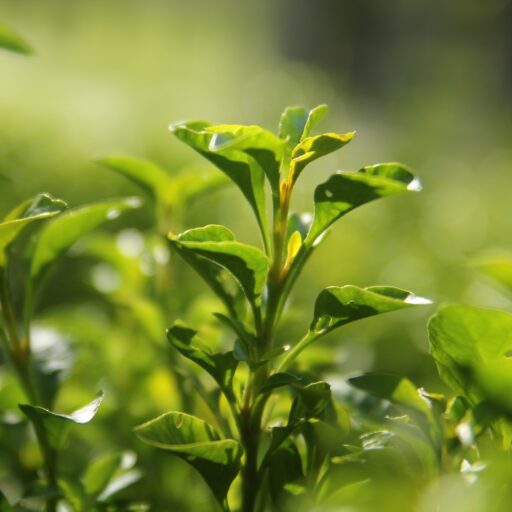
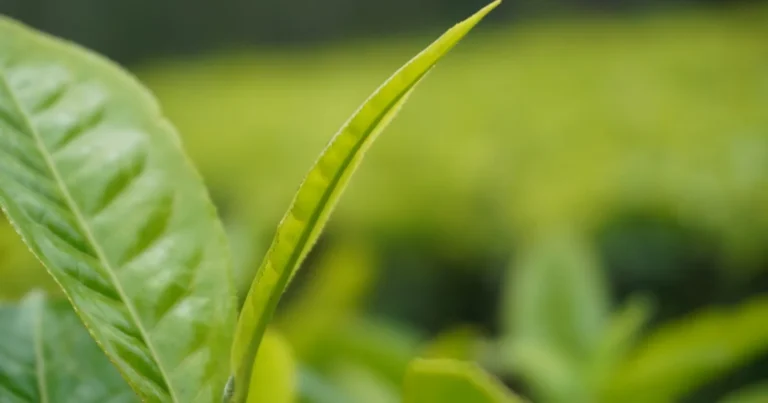
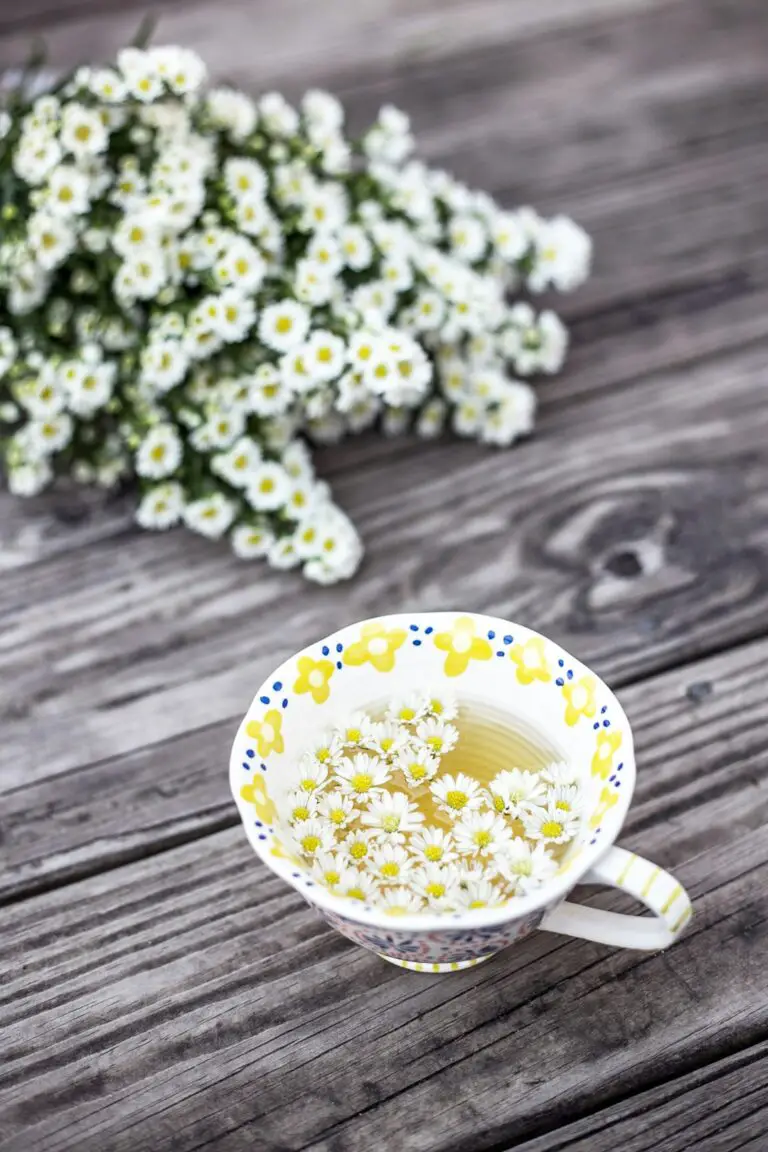
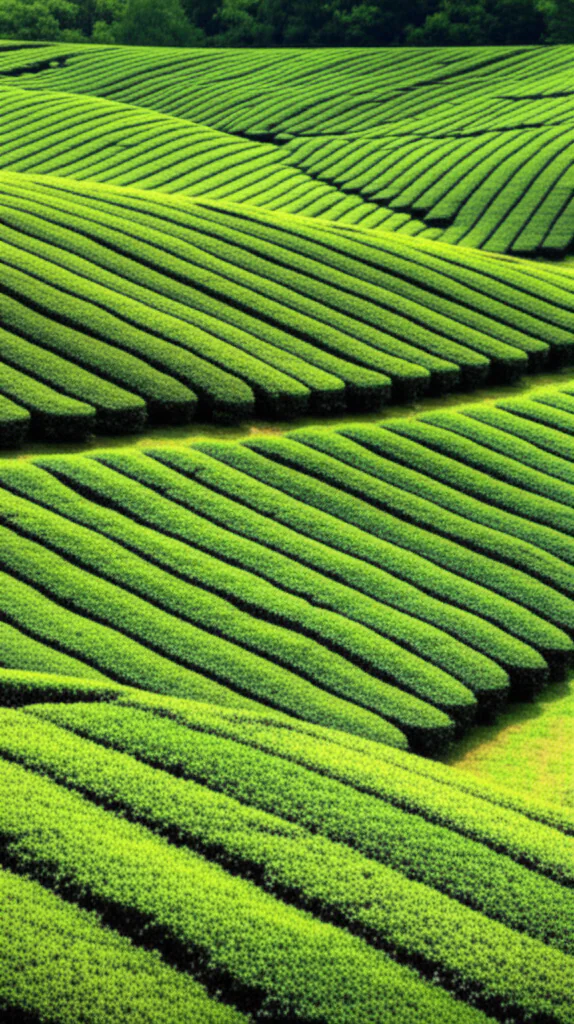
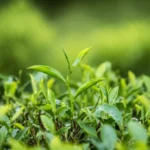
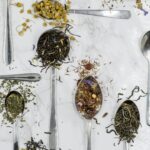

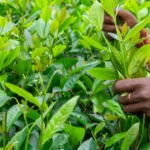
I am on coumadin(warfarin). Therefore cannot have herbal teas. I find it very hard to find tea i can drink. I buy decaf Luziane for summer iced tea. I drink only Bigelow dark tea…some flavored. Where can I find loose tea that I can drink with no interference to coumadin?. I’ve been looking for a chocolate mint flavor. My friend gave me some as a gift but my Pharmacist advised against it.